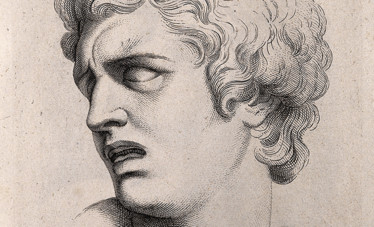The Problem With Pain
Hundreds of potential drug targets have been discovered by researchers mapping pain pathways, but clinical trials have proved unsuccessful in most cases. Can we pick our way through the translational maze to find much-needed new analgesics?

Chronic pain is one of the most prevalent – and intractable – healthcare challenges worldwide. A third of the adult population of the USA, some 100 million people, suffer from chronic pain. Lower back pain alone is the leading cause of disability in the world. The therapeutic armament has remained largely unchanged in decades, and many patients will remain in pain for months or years – even for life.
Historically, pain has been viewed as a symptom of injury or disease. We thought that if we cured a patient of their ailment, their pain would resolve. We now realize that chronic pain is a disease in and of itself, molding the structure and shaping the responses of the nervous system. The picture is further complicated by the fact that pain is never simply a sensory experience, but an emotional one too – clinical pain is much more complex than simple nociception. But progress is being made. Our understanding of the mechanisms behind pain has improved dramatically – if we can join the pieces together, perhaps new therapies are not so far away, after all.
Four prominent pain researchers tell us why they aren’t ready to give up the fight.
"Crossing the Threshold Basic and clinical researchers must join forces to fight pain" Michael Gold
"The Pain Puzzle" Roger Fillingim
"Growing Pains" Suellen Walker
"The Mouse Trap" Jeffrey Mogil
Visualizing pain
The photographs featured in the following articles are part of a series of projects to help patients communicate their experiences of pain.
Pain is a complex and subjective experience, difficult to communicate within the verbal or numerical scales commonly used by clinicians. The face2face project at University College London Hospitals (UCLH) explores how photographic images can expand pain dialogue in the consulting room to include aspects of experience frequently omitted using traditional measures. It is a collaboration between artist Deborah Padfield, and facial pain specialist Professor Joanna Zakrzewska, with clinicians and patients from the pain management teams at UCLH. Padfield co-creates photographs with pain patients which reflect their experience of pain throughout their treatment journey. These photographs have been integrated with images from a previous project – perceptions of pain – to form a pack of PAIN CARDS, which are being trialed as a communication tool to facilitate doctor–patient communication.
For more information please see:
www.ucl.ac.uk/slade/research/projects/pain-speaking-the-threshold
www.ucl.ac.uk/slade/research/mphil-phd/deborah-padfield

“As Editor of The Translational Scientist, I’m working closely with our audience to create vibrant, engaging content that reflects the hard work and passion that goes into bringing new medicines to market. I got my start in biomedical publishing as a commissioning editor for healthcare journals and have spent my career covering everything from early-stage research to clinical medicine, so I know my way around. And I can’t think of a more interesting, challenging or important area to be working in.”















